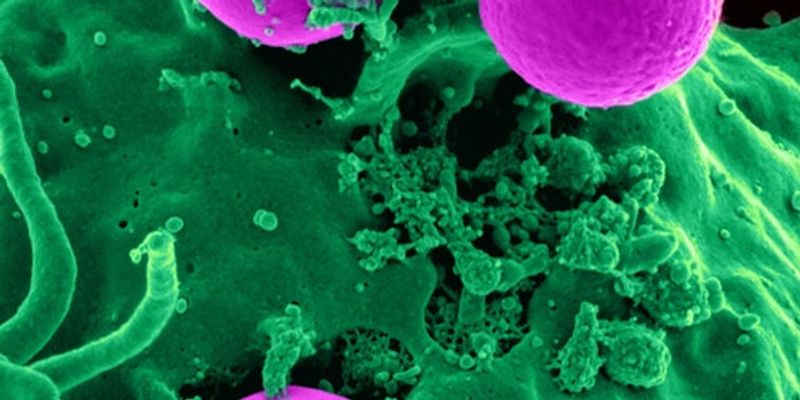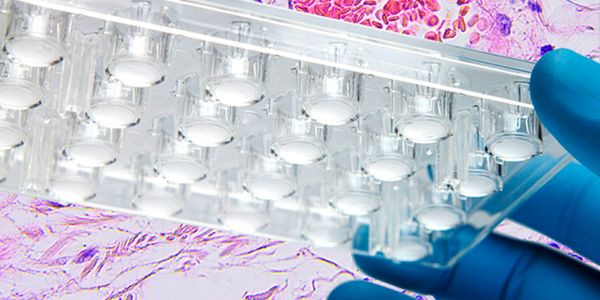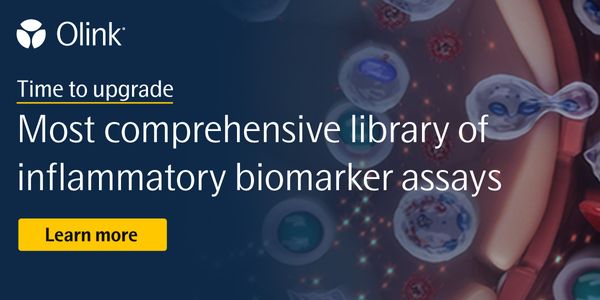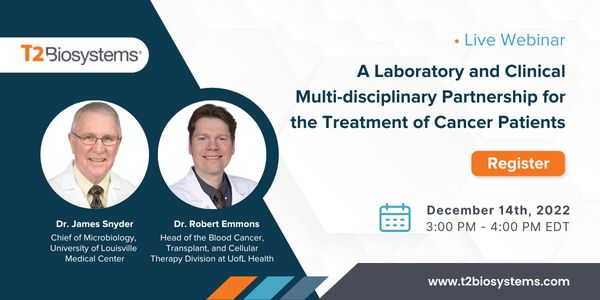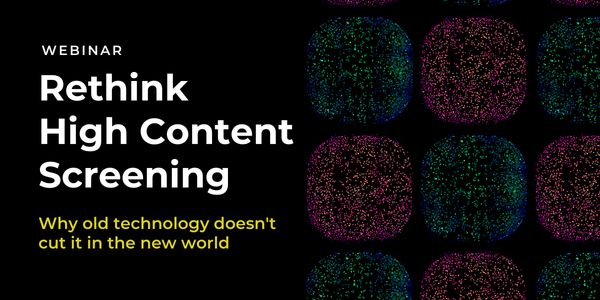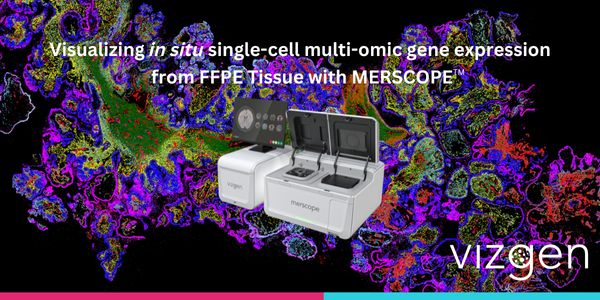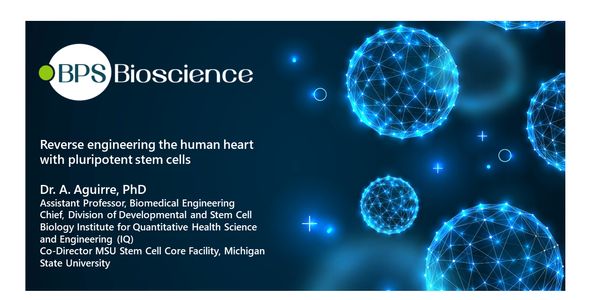Cell
Cell: is the smallest structural and functional unit of an organism, typically microscopic and consisting of cytoplasm and a nucleus enclosed in a membrane. Microscopic organisms typically consist of a single cell, which is either eukaryotic or prokaryotic.
-
FEB 14, 2023 | 10:00 AMDate: February 14, 2023 Time: 10:00am (PST), 1:00pm (EST), 7:00pm (CET) The dorsal pontine tegmentum (PnTg) is part of the Pons, the largest section of the brainstem. It is a complex region...FEB 09, 2023 | 9:00 AMDate: February 09, 2023 Time: 9:00am (PST), 12:00pm (EST), 6:00pm (CET) Monoclonal gammopathies (MGs) comprise a broad set of diseases involving the abnormal clonal proliferation of plasma c...FEB 09, 2023 | 7:00 AMDate: February 09, 2023 Time: 7:00am (PST), 10:00pm (EST), 4:00pm (CET) The AI Microscopy Symposium offers an unique forum for presenting...FEB 08, 2023 | 9:00 AMDate: February 08, 2023 Time: 9:00am (PST), 12:00pm (EST), 6:00pm (CEST) Understanding cell-to-cell interactions in a tumor microenvironment are increasingly challenging due to the complexit...JAN 25, 2023 | 10:00 AMDate: January 25, 2023 Time: 10:00am (PST), 1:00pm (EST), 7:00pm (CET) The field of proteomics is poised for a single-molecule revolution – enabling more comprehensive analysis of the...JAN 25, 2023 | 8:00 AMDate: January 25, 2023 Time: 8:00am (PST), 11:00am (EST), 5:00pm (CET) Allogeneic hematopoietic cell transplantation (HCT) is curative for hematological diseases; however, is also associated...Speaker: Ivan Pasic, Hon BSc, PhD, MD, FRCPC , Dr. Frank (Fotios) MichelisSponsored By: Olink ProteomicsDEC 14, 2022 | 12:00 PMDate: December 14, 2022 Time: 12:00pm (PST), 3:00pm (EST), 9:00pm (CET) Adopting novel technologies is essential for improving patient outcomes, but the key to sustainable success is through...DEC 08, 2022 | 10:00 AMDate: November 08, 2022 Time: 9:00am (PST), 12:00pm (EST), 6:00pm (CET) In this webinar, scientists from Araceli Biosciences examine how high content screening (HCS) needs have changed in th...DEC 07, 2022 | 9:00 AMDate: December 07, 2022 Time: 9:00am (PST), 12:00pm (EST), 6:00pm (CET) Join us for an exciting live panel webinar, as we celebrate the 60th anniversary of Gibco Cell Culture. The panelists...Speaker: Jessica Hess , Rukia Henry , Ernesto Goulart , Ameet Chimote, PhDSponsored By: Thermo Fisher Scientific/GibcoDEC 07, 2022 | 8:00 AMDate: December 7, 2022 Time: 8:00am (PST), 11:00am (EST), 5:00pm (CET) Join Tom Fletcher, Scientific Director, Research and Development, and Guy Matthews, Director of Single Use Technologie...Date: December 06, 2022 Time: 8:00am (PST), 11:00pm (EST), 5:00pm (CET) Scientist must look beyond studying individual proteins and examine the structure and assembly of protein complexes wi...Speaker: Pascal Albanese, PhD , Edward Pryor, PhD , Albert Konijnenberg, PhD , JOINING FOR Q&A: Rosa Viner, PhDPresented at: Thermo Fisher Scientific - Electron Microscopy Webinars
Sponsored By: Thermo Fisher Scientific
NOV 30, 2022 | 11:00 AM
Date: November 30 Time: 11:00am (PDT), 2:00pm (EDT), Kidney function is assessed in the laboratory by measuring serum creatinine (Cr) and/or......
NOV 17, 2022 | 7:00 AM
Date: November 17, 2022 Time: 7:00am (PST), 10:00am (EST), 4:00pm (CET) In order to truly understand cell biology, researchers need easy-to-use tools that preserve the natural complexity of...
NOV 16, 2022 | 7:00 PM
Date: November 16, 2022 Time: 2:00pm (AEST) Date: November 17, 2022 7:00pm (PST), 10:00pm (EST), 4:00am (CET) The growth in FDA-approved cell and gene therapy products for the treatment of d...
NOV 16, 2022 | 10:00 AM
Date: November 16, 2022 Time: 10:00am (PST), 1:00pm (EST), 7:00pm (CET) Eli Lilly, a global healthcare leader, has implemented a next generation research (NGR) initiative to improve the valu...
NOV 16, 2022 | 9:00 AM
Date: November 16, 2022 Time: 9:00am (PST), 12:00pm (EST), 6:00pm (CET) No more estimating. No more ranges. No more uncertainty. While PDX tumor models are crucial for gaining predictive ins...
NOV 16, 2022 | 8:00 AM
Date: November 16, 2022 Time: 8:00am (PST), 11:00am (EST), 5:00pm (CET) Autoantibody assays may have significant differences due to the heterogeneity of autoantibodies, including epitope spe...
NOV 16, 2022 | 8:00 AM
Date: November 16, 2022 Time: 8:00am (PST), 11:00am (EST), 5:00pm (CET) Immunopeptides play an essential role in adaptive immunity by activating and ensuring T-cell specificity. Mass spectro...
NOV 15, 2022 | 9:00 AM
Date: November 15, 2022 Time: 9:00am (PST), 12:00pm (EST), 6:00pm (CET) Recent advances in stem cell technologies, synthetic development and organoid biology are enabling us to create more a...
NOV 10, 2022 | 8:00 AM
Date: November 10, 2022 Time: 8:00am (PST), 11:00am (EST), 5:00pm (CET) Single B cell screening is a powerful and efficient strategy for generating antigen-specific monoclonal antibodies. Di...
NOV 09, 2022 | 8:00 AM
Date: November 09, 2022 Time: 8:00am (PST), 11:00am (EST), 5:00pm (CET) The field of cell and gene therapy is rapidly growing. In particular, the use of lentiviruses in CAR-T applications is...
NOV 08, 2022 | 11:00 AM
Date: November 08, 2022 Time: 11:00am (PST), 2:00pm (EST), 8:00pm (CET) Developing safe and effective CAR T cell therapies is a challenging task. That’s why thinking translational earl...
NOV 08, 2022 | 8:00 AM
Date: November 08, 2022 Time: 8:00am (PST), 11:00am (EST), 5:00pm (CEST) While flow cytometry shines by its flexibility, it requires a high level of expertise in antibody panel development,...
NOV 03, 2022 | 6:00 AM
Date: October 13, 2022 Time: 10:00am (PDT), 12:00pm (EDT), 8:00pm (CEST) Most known immune checkpoints exert their effects upon protein-protein interactions, such as the PD1 checkpoint on CD...
FEB 14, 2023 | 10:00 AM
Date: February 14, 2023 Time: 10:00am (PST), 1:00pm (EST), 7:00pm (CET) The dorsal pontine tegmentum (PnTg) is part of the Pons, the largest section of the brainstem. It is a complex region...
FEB 09, 2023 | 9:00 AM
Date: February 09, 2023 Time: 9:00am (PST), 12:00pm (EST), 6:00pm (CET) Monoclonal gammopathies (MGs) comprise a broad set of diseases involving the abnormal clonal proliferation of plasma c...
FEB 09, 2023 | 7:00 AM
Date: February 09, 2023 Time: 7:00am (PST), 10:00pm (EST), 4:00pm (CET) The AI Microscopy Symposium offers an unique forum for presenting...
FEB 08, 2023 | 9:00 AM
Date: February 08, 2023 Time: 9:00am (PST), 12:00pm (EST), 6:00pm (CEST) Understanding cell-to-cell interactions in a tumor microenvironment are increasingly challenging due to the complexit...
JAN 25, 2023 | 10:00 AM
Date: January 25, 2023 Time: 10:00am (PST), 1:00pm (EST), 7:00pm (CET) The field of proteomics is poised for a single-molecule revolution – enabling more comprehensive analysis of the...
JAN 25, 2023 | 8:00 AM
Date: January 25, 2023 Time: 8:00am (PST), 11:00am (EST), 5:00pm (CET) Allogeneic hematopoietic cell transplantation (HCT) is curative for hematological diseases; however, is also associated...
Speaker:
Ivan Pasic, Hon BSc, PhD, MD, FRCPC
, Dr. Frank (Fotios) Michelis
Sponsored By: Olink Proteomics
DEC 14, 2022 | 12:00 PM
Date: December 14, 2022 Time: 12:00pm (PST), 3:00pm (EST), 9:00pm (CET) Adopting novel technologies is essential for improving patient outcomes, but the key to sustainable success is through...
DEC 08, 2022 | 10:00 AM
Date: November 08, 2022 Time: 9:00am (PST), 12:00pm (EST), 6:00pm (CET) In this webinar, scientists from Araceli Biosciences examine how high content screening (HCS) needs have changed in th...
DEC 07, 2022 | 9:00 AM
Date: December 07, 2022 Time: 9:00am (PST), 12:00pm (EST), 6:00pm (CET) Join us for an exciting live panel webinar, as we celebrate the 60th anniversary of Gibco Cell Culture. The panelists...
Speaker:
Jessica Hess
, Rukia Henry
, Ernesto Goulart
, Ameet Chimote, PhD
Sponsored By: Thermo Fisher Scientific/Gibco
DEC 07, 2022 | 8:00 AM
Date: December 7, 2022 Time: 8:00am (PST), 11:00am (EST), 5:00pm (CET) Join Tom Fletcher, Scientific Director, Research and Development, and Guy Matthews, Director of Single Use Technologie...
Date: December 06, 2022 Time: 8:00am (PST), 11:00pm (EST), 5:00pm (CET) Scientist must look beyond studying individual proteins and examine the structure and assembly of protein complexes wi...
Speaker:
Pascal Albanese, PhD
, Edward Pryor, PhD
, Albert Konijnenberg, PhD
, JOINING FOR Q&A: Rosa Viner, PhD
Presented at: Thermo Fisher Scientific - Electron Microscopy Webinars
Sponsored By: Thermo Fisher Scientific
Sponsored By: Thermo Fisher Scientific
NOV 30, 2022 | 11:00 AM
Date: November 30 Time: 11:00am (PDT), 2:00pm (EDT), Kidney function is assessed in the laboratory by measuring serum creatinine (Cr) and/or......
NOV 17, 2022 | 7:00 AM
Date: November 17, 2022 Time: 7:00am (PST), 10:00am (EST), 4:00pm (CET) In order to truly understand cell biology, researchers need easy-to-use tools that preserve the natural complexity of...
NOV 16, 2022 | 7:00 PM
Date: November 16, 2022 Time: 2:00pm (AEST) Date: November 17, 2022 7:00pm (PST), 10:00pm (EST), 4:00am (CET) The growth in FDA-approved cell and gene therapy products for the treatment of d...
NOV 16, 2022 | 10:00 AM
Date: November 16, 2022 Time: 10:00am (PST), 1:00pm (EST), 7:00pm (CET) Eli Lilly, a global healthcare leader, has implemented a next generation research (NGR) initiative to improve the valu...
NOV 16, 2022 | 9:00 AM
Date: November 16, 2022 Time: 9:00am (PST), 12:00pm (EST), 6:00pm (CET) No more estimating. No more ranges. No more uncertainty. While PDX tumor models are crucial for gaining predictive ins...
NOV 16, 2022 | 8:00 AM
Date: November 16, 2022 Time: 8:00am (PST), 11:00am (EST), 5:00pm (CET) Autoantibody assays may have significant differences due to the heterogeneity of autoantibodies, including epitope spe...
NOV 16, 2022 | 8:00 AM
Date: November 16, 2022 Time: 8:00am (PST), 11:00am (EST), 5:00pm (CET) Immunopeptides play an essential role in adaptive immunity by activating and ensuring T-cell specificity. Mass spectro...
NOV 15, 2022 | 9:00 AM
Date: November 15, 2022 Time: 9:00am (PST), 12:00pm (EST), 6:00pm (CET) Recent advances in stem cell technologies, synthetic development and organoid biology are enabling us to create more a...
NOV 10, 2022 | 8:00 AM
Date: November 10, 2022 Time: 8:00am (PST), 11:00am (EST), 5:00pm (CET) Single B cell screening is a powerful and efficient strategy for generating antigen-specific monoclonal antibodies. Di...
NOV 09, 2022 | 8:00 AM
Date: November 09, 2022 Time: 8:00am (PST), 11:00am (EST), 5:00pm (CET) The field of cell and gene therapy is rapidly growing. In particular, the use of lentiviruses in CAR-T applications is...
NOV 08, 2022 | 11:00 AM
Date: November 08, 2022 Time: 11:00am (PST), 2:00pm (EST), 8:00pm (CET) Developing safe and effective CAR T cell therapies is a challenging task. That’s why thinking translational earl...
NOV 08, 2022 | 8:00 AM
Date: November 08, 2022 Time: 8:00am (PST), 11:00am (EST), 5:00pm (CEST) While flow cytometry shines by its flexibility, it requires a high level of expertise in antibody panel development,...
NOV 03, 2022 | 6:00 AM
Date: October 13, 2022 Time: 10:00am (PDT), 12:00pm (EDT), 8:00pm (CEST) Most known immune checkpoints exert their effects upon protein-protein interactions, such as the PD1 checkpoint on CD...
